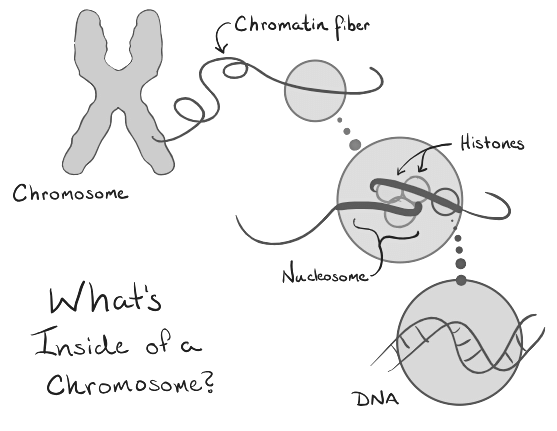MCAT Exam > MCAT Notes > Biology for MCAT > Mitosis: Unveiling the Intricacies of Cellular Division
Mitosis: Unveiling the Intricacies of Cellular Division | Biology for MCAT PDF Download
Introduction: Journey from a Zygote to a Complex Organism
You began your existence as a single fertilized cell, known as a zygote, nestled inside your mother's womb. Now, behold the magnificence of your being, a thriving community comprising hundreds of millions of cells, harmoniously collaborating to sustain your life. But how did this extraordinary multitude of cells emerge from a solitary entity? The answer lies in the mesmerizing process of cell division. Starting with the division of the zygote into two cells, this cascade of division repeats, resulting in a spectacular transformation that leads to your current state as a living and functioning organism.
I. The Dance of Life: Mitosis and Meiosis
The captivating phenomenon of cell division can occur in two ways within humans and most other animals: mitosis and meiosis. Each process possesses its unique characteristics and contributes to the development and survival of life. Let us explore the fascinating intricacies of mitosis, which entails the production of identical clones, and meiosis, which creates specialized cells called gametes.
II. Chromosomes: Threads of Genetic Information
To comprehend the marvels of mitosis, we must first grasp the concept of chromosomes. Chromosomes are thread-like structures composed of a material called chromatin, comprising DNA and histones—special structural proteins. Visualize a chromosome as an elongated DNA strand adorned with histone proteins akin to beads on a string. These chromosomes reside within the nuclei of cells. Astonishingly, when we compare the diameter of a cell nucleus to the length of a chromosome, we uncover a remarkable fact: chromosomes must be tightly condensed to fit within the nucleus. It is analogous to a lengthy snake skillfully coiling into a compact ball. Although the fundamental structure of chromosomes remains consistent across animals, each species possesses a distinct number of chromosomes. For instance, humans boast 46 chromosomes, while nematodes exhibit a mere four.

III. The Symphony of Mitosis Unveiled
The primary objective of mitosis is to generate additional diploid cells. This intricate process commences with the replication of each chromosome, followed by the segregation of the replicated copies to opposite sides of the cell. Consequently, when the cell divides, each newly formed cell inherits a complete set of chromosomes. The stages of mitosis, meticulously orchestrated, propel life's grand spectacle.
- Interphase: Laying the Foundation for Duplication: Interphase sets the stage for mitosis, encompassing various critical events. During this phase, the DNA strand of each chromosome undergoes replication, resulting in a duplicated structure. The replicated DNA strands are connected at a central point called the centromere, forming a bivalent chromosome. Each bivalent chromosome consists of two sister chromatids—identical replicas of each other. Conversely, a chromosome consisting of a solitary chromatid is referred to as a monovalent chromosome.

- Prophase: Preparing for the Great Condensation: In prophase, the bivalent chromosomes condense into tightly packed structures, resembling a compressed slinky. The mitotic spindle, a vital cellular apparatus, materializes, while the nuclear envelope disintegrates. Imagine a stretched-out slinky morphing into a compacted coil—this metamorphosis epitomizes the transformation occurring within chromosomes during prophase.

- Metaphase: The Exquisite Alignment: During metaphase, the chromosomes gracefully align in a single-file formation at the cell's midpoint. At this stage, the nuclear membrane has dissolved, and the mitotic spindles have dutifully attached themselves to each chromatid across all chromosomes. Witness the mesmerizing sight of a nematode cell nucleus after prophase and metaphase, depicting this enchanting arrangement.


- Anaphase: The Elegance of Chromosome Separation: Anaphase ushers in the breathtaking moment when the mitotic spindles delicately separate each chromatid from its replicated counterpart, skillfully guiding them towards opposite poles of the cell. What was once four bivalent chromosomes now transforms into two sets of four monovalent chromosomes. Imperative to note is the significance of precise chromosome separation, as imbalances can lead to malfunctions, exemplified by conditions like Down syndrome.

- Telophase: Culmination and Reassembly: As the final act of mitosis, telophase orchestrates the reformation of membranes around the newly segregated chromosome groups. Simultaneously, the disassembly of the mitotic spindles concludes, signifying the fulfillment of their pivotal role. Post-mitosis, each cell possesses two sets of 46 chromosomes, ensconced within individual nuclear membranes. The culmination of this awe-inspiring journey is marked by cytokinesis, a process where the cell divides, resulting in the creation of two clones, each housing 46 monovalent chromosomes.

Conclusion
Mitosis, the captivating dance of cellular division, intricately weaves the fabric of life. From the initial zygote to the intricate web of cells functioning harmoniously within your body, each step in mitosis unveils the marvels of existence. As we unravel the secrets held within the nucleus, we gain a deeper appreciation for the delicate balance and complexity of life's building blocks. Let the symphony of mitosis remind us of the miraculous nature of our existence—a testament to the breathtaking beauty of the cellular world.
The document Mitosis: Unveiling the Intricacies of Cellular Division | Biology for MCAT is a part of the MCAT Course Biology for MCAT.
All you need of MCAT at this link: MCAT
|
233 videos|16 docs|32 tests
|
Related Searches















